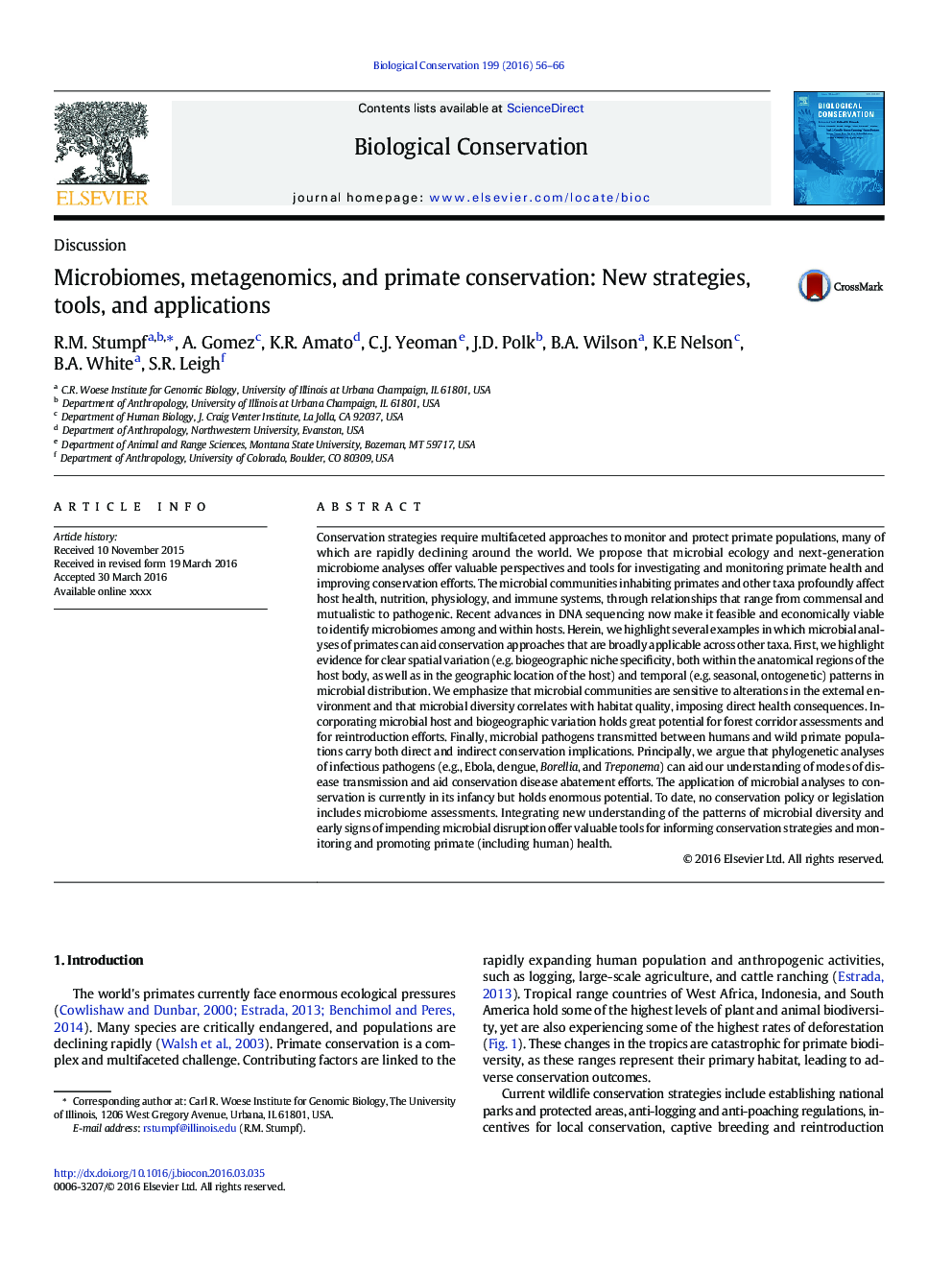| Article ID | Journal | Published Year | Pages | File Type |
|---|---|---|---|---|
| 6298377 | Biological Conservation | 2016 | 11 Pages |
Abstract
Conservation strategies require multifaceted approaches to monitor and protect primate populations, many of which are rapidly declining around the world. We propose that microbial ecology and next-generation microbiome analyses offer valuable perspectives and tools for investigating and monitoring primate health and improving conservation efforts. The microbial communities inhabiting primates and other taxa profoundly affect host health, nutrition, physiology, and immune systems, through relationships that range from commensal and mutualistic to pathogenic. Recent advances in DNA sequencing now make it feasible and economically viable to identify microbiomes among and within hosts. Herein, we highlight several examples in which microbial analyses of primates can aid conservation approaches that are broadly applicable across other taxa. First, we highlight evidence for clear spatial variation (e.g. biogeographic niche specificity, both within the anatomical regions of the host body, as well as in the geographic location of the host) and temporal (e.g. seasonal, ontogenetic) patterns in microbial distribution. We emphasize that microbial communities are sensitive to alterations in the external environment and that microbial diversity correlates with habitat quality, imposing direct health consequences. Incorporating microbial host and biogeographic variation holds great potential for forest corridor assessments and for reintroduction efforts. Finally, microbial pathogens transmitted between humans and wild primate populations carry both direct and indirect conservation implications. Principally, we argue that phylogenetic analyses of infectious pathogens (e.g., Ebola, dengue, Borellia, and Treponema) can aid our understanding of modes of disease transmission and aid conservation disease abatement efforts. The application of microbial analyses to conservation is currently in its infancy but holds enormous potential. To date, no conservation policy or legislation includes microbiome assessments. Integrating new understanding of the patterns of microbial diversity and early signs of impending microbial disruption offer valuable tools for informing conservation strategies and monitoring and promoting primate (including human) health.
Related Topics
Life Sciences
Agricultural and Biological Sciences
Ecology, Evolution, Behavior and Systematics
Authors
R.M. Stumpf, A. Gomez, K.R. Amato, C.J. Yeoman, J.D. Polk, B.A. Wilson, K.E Nelson, B.A. White, S.R. Leigh,
